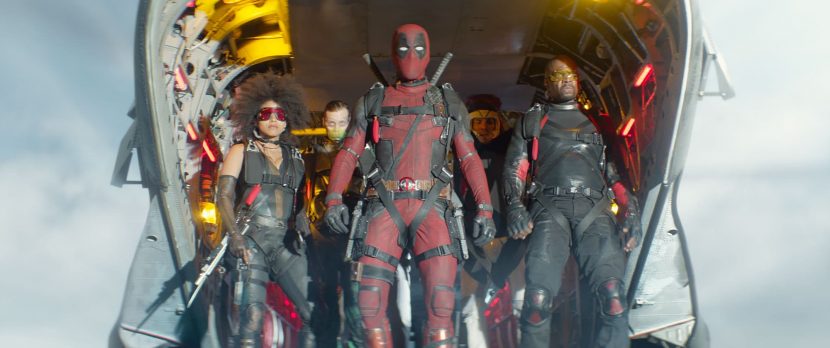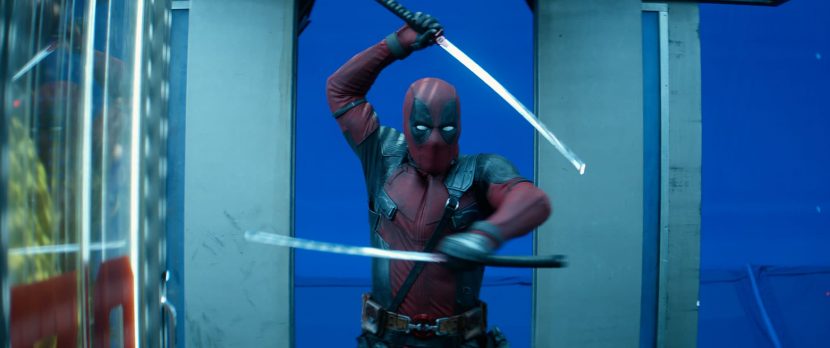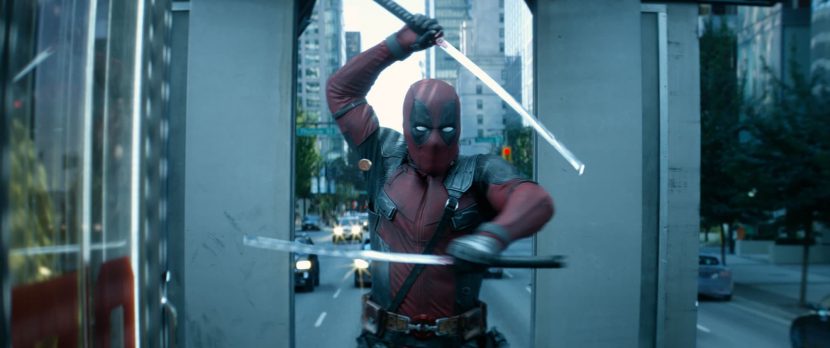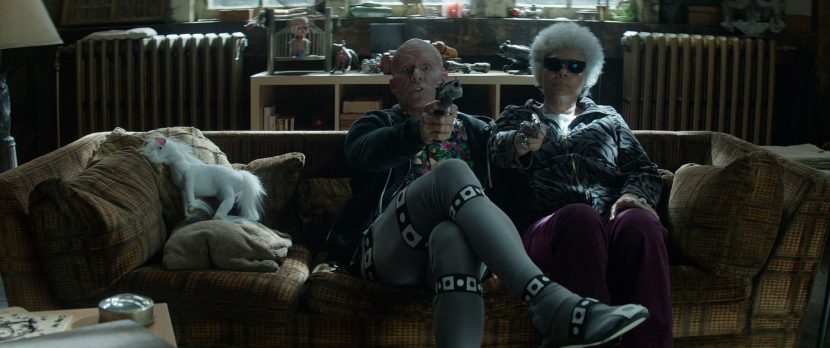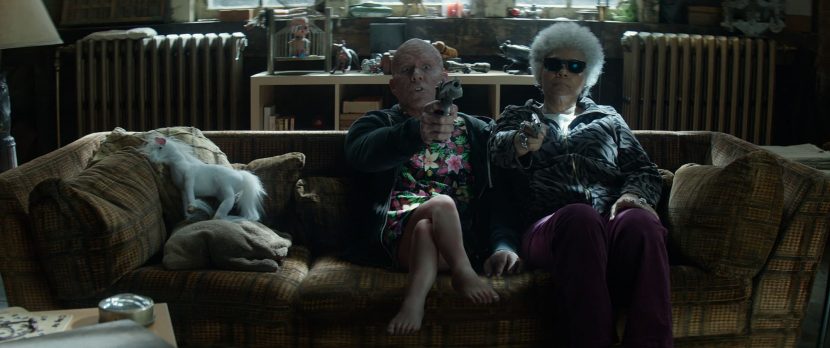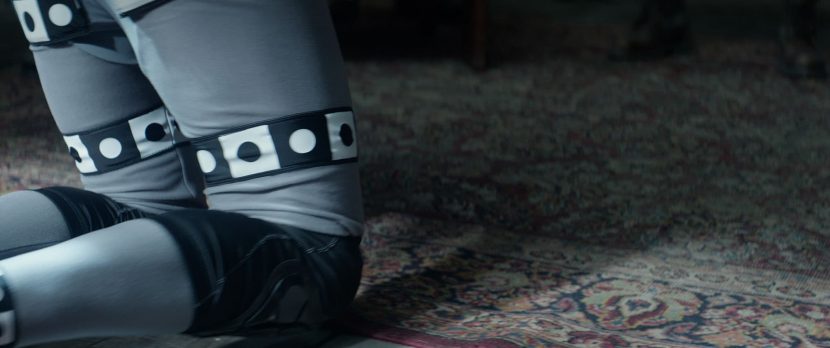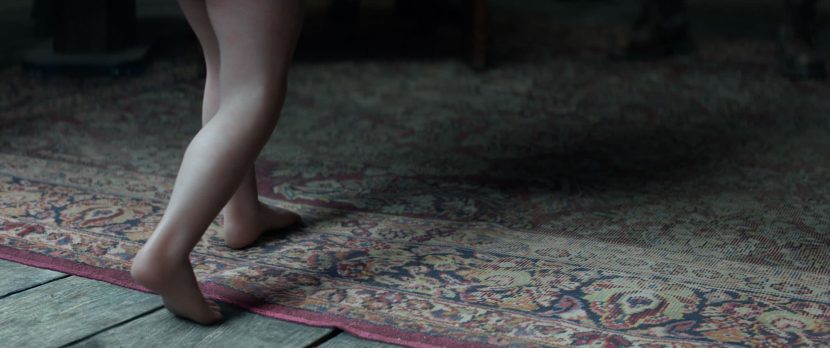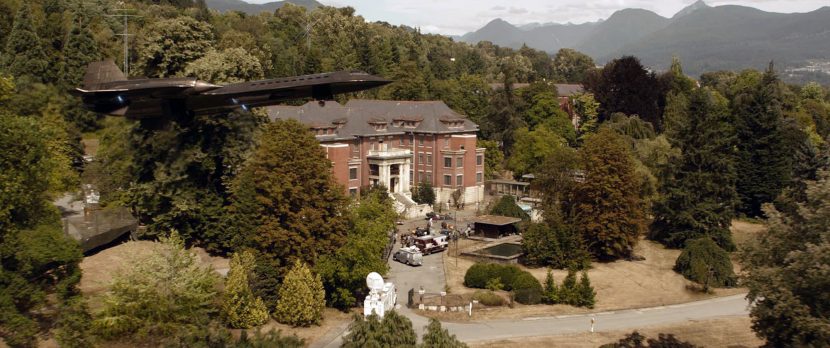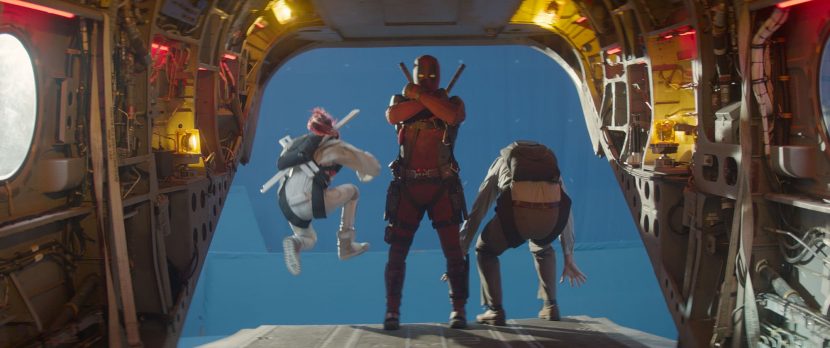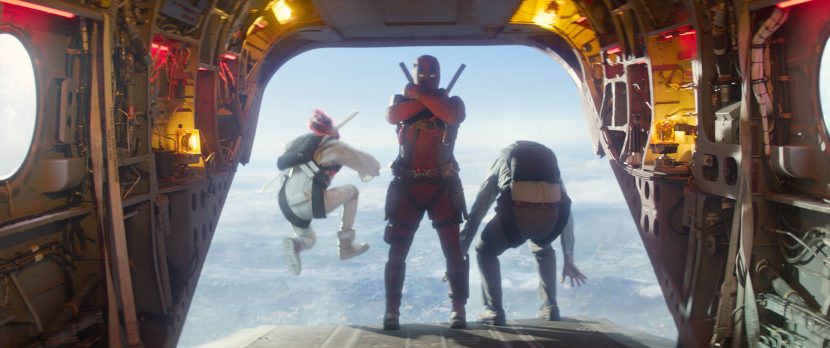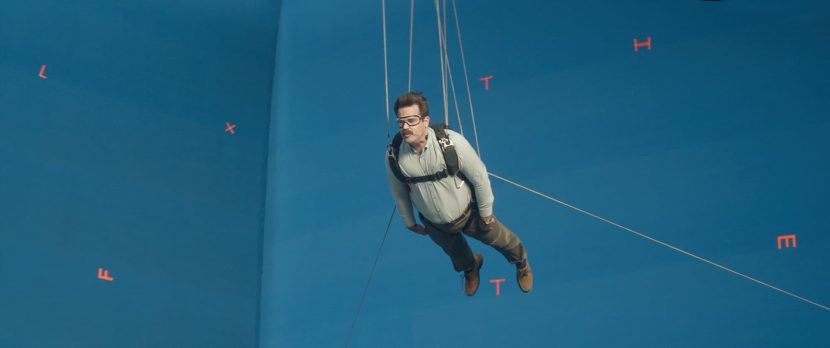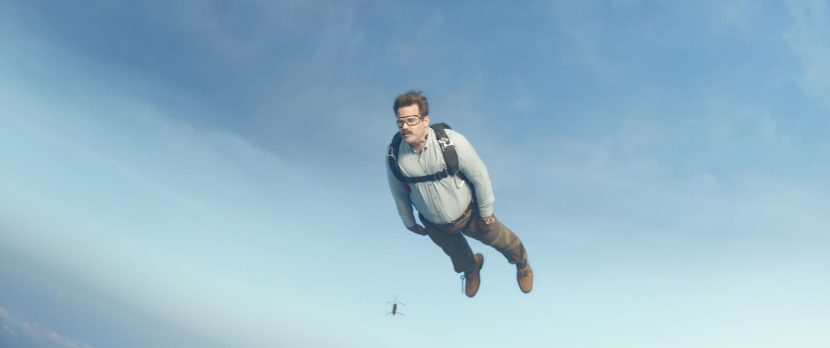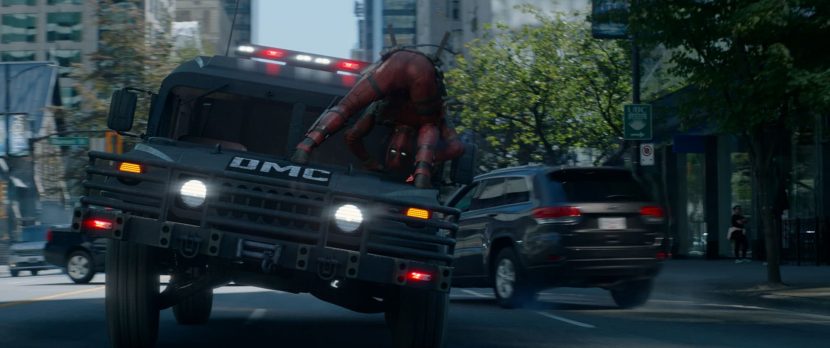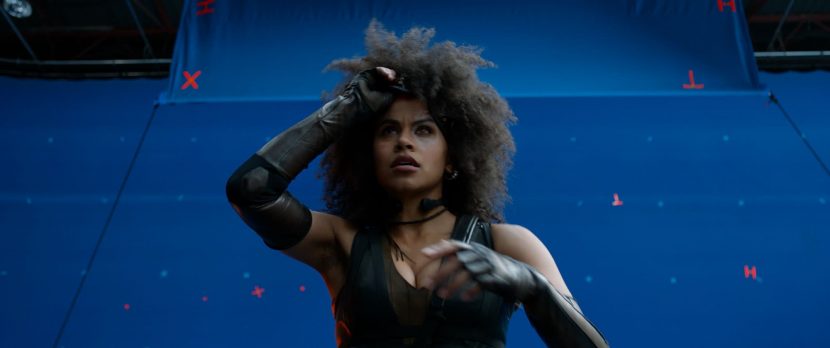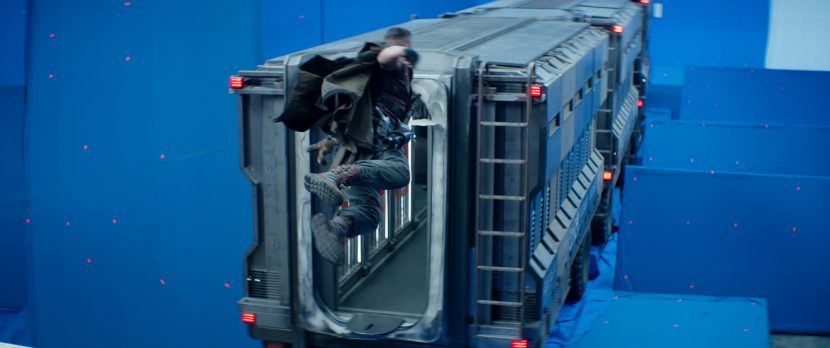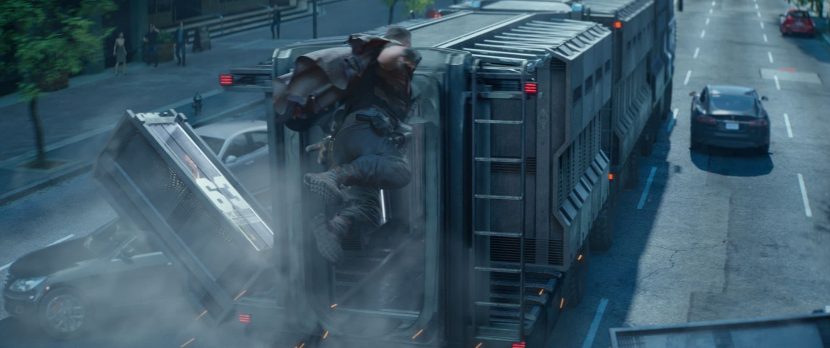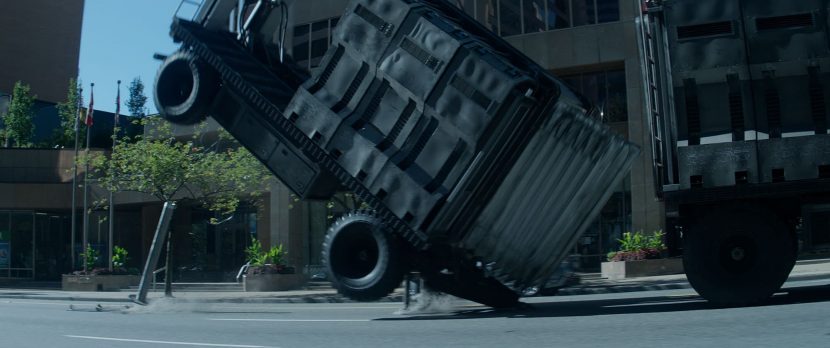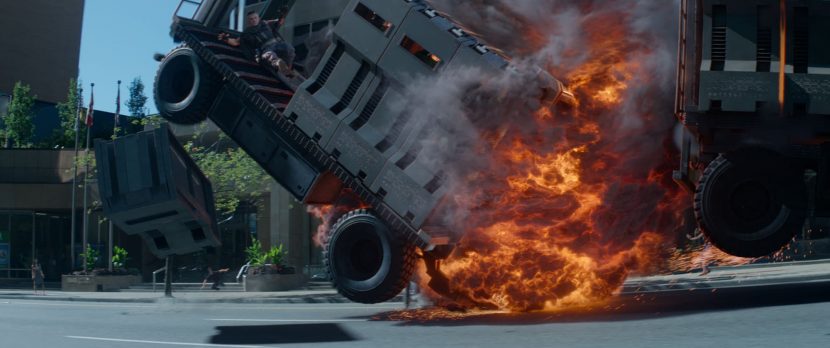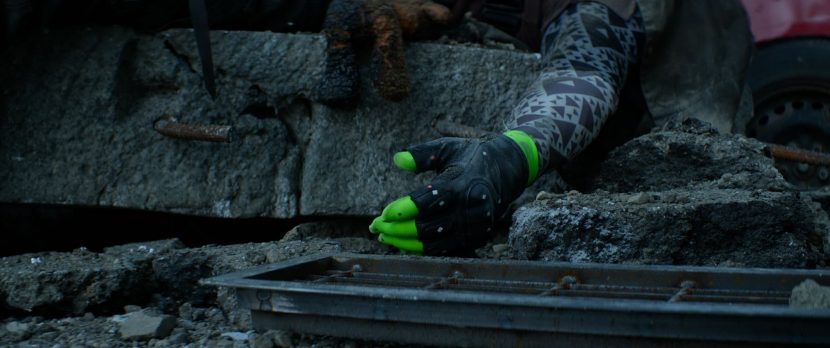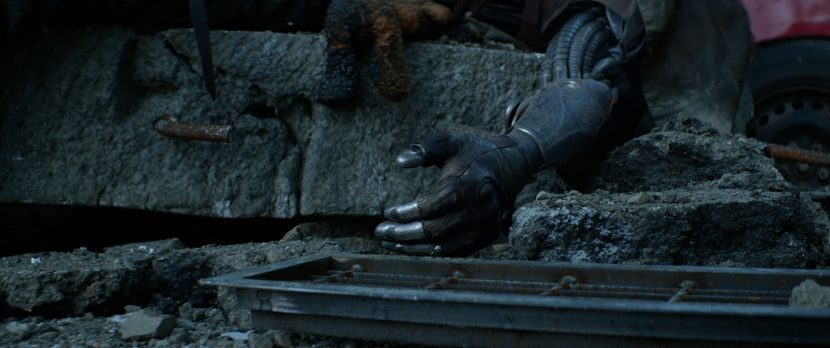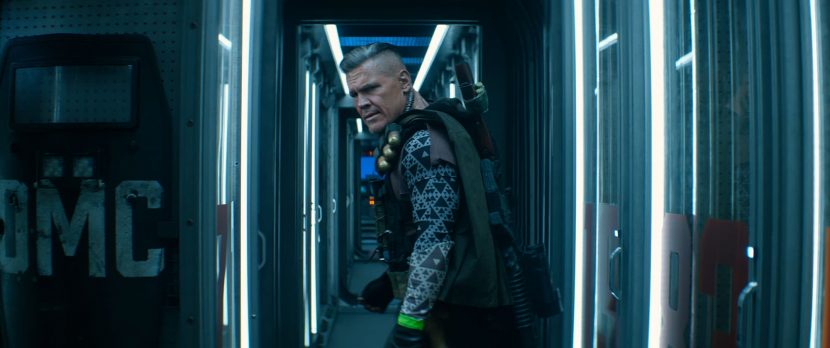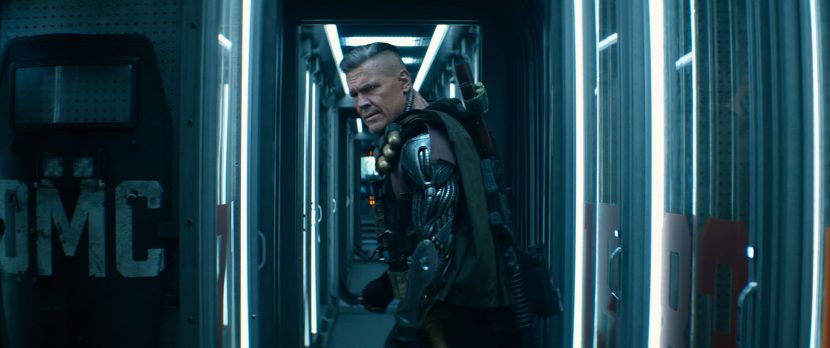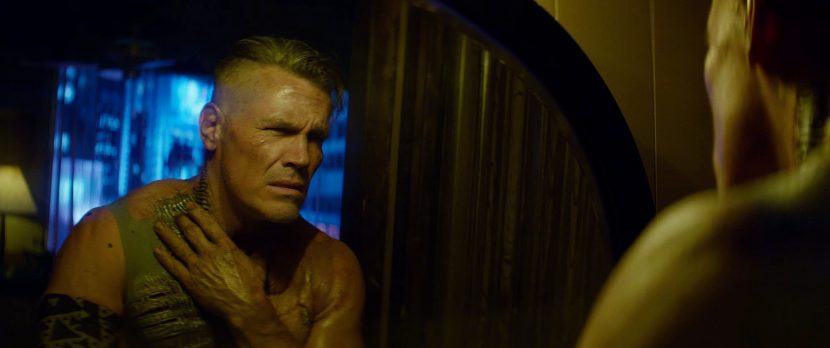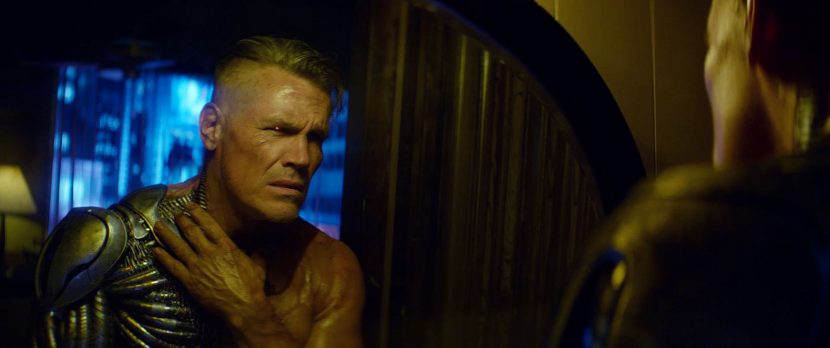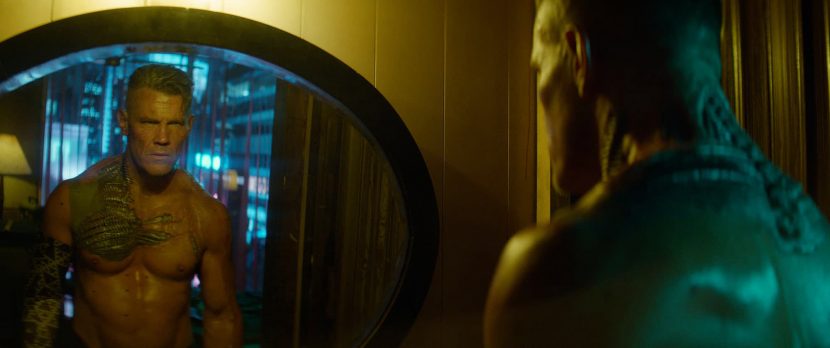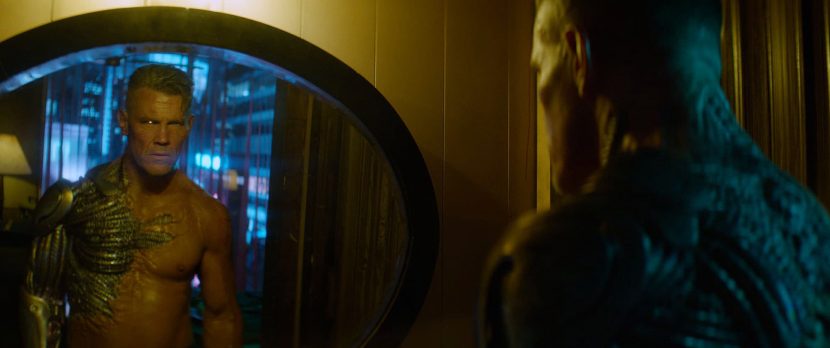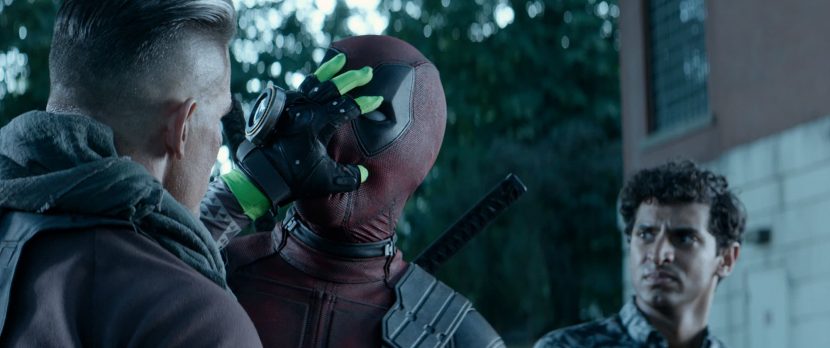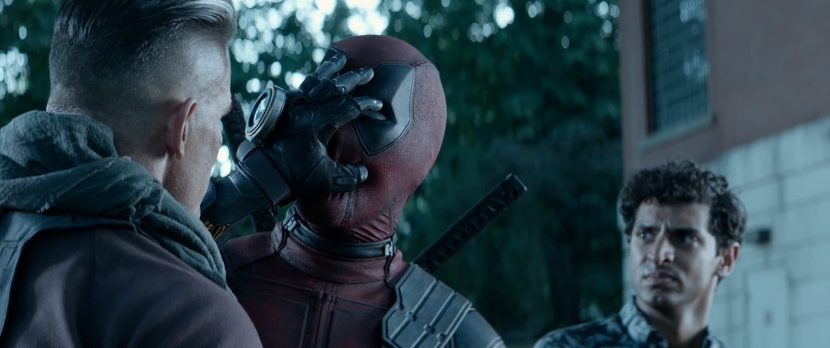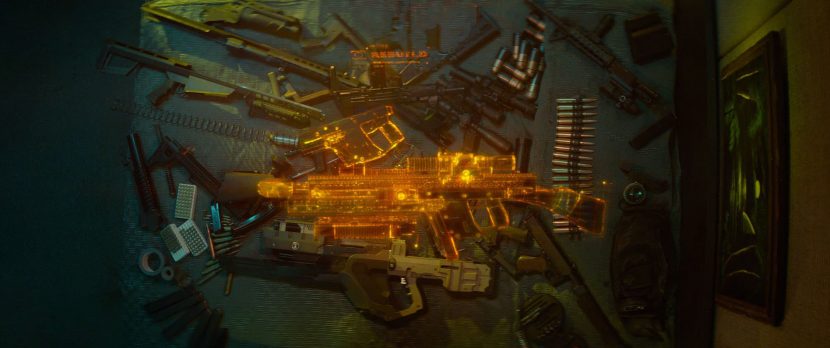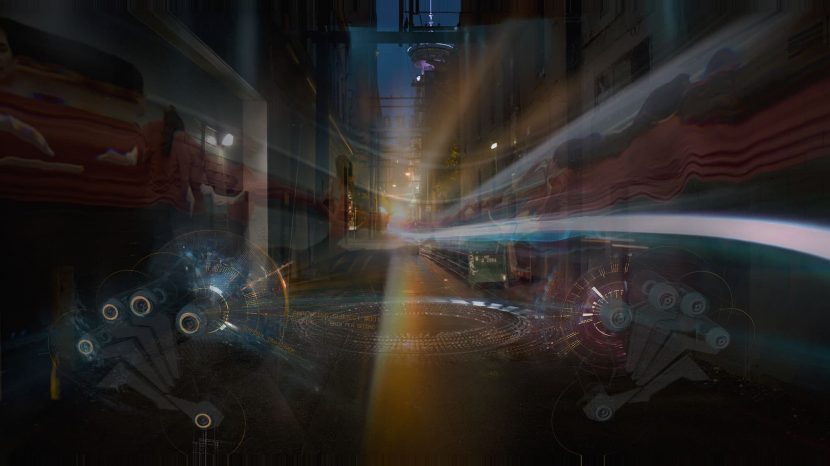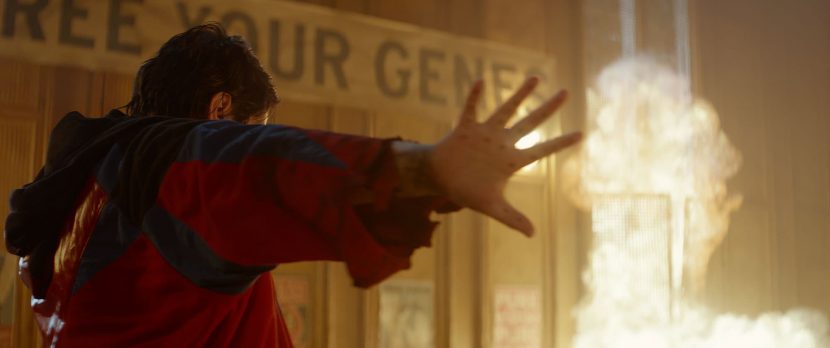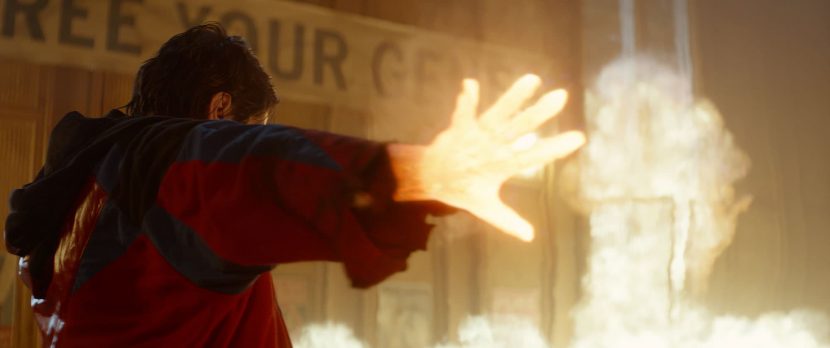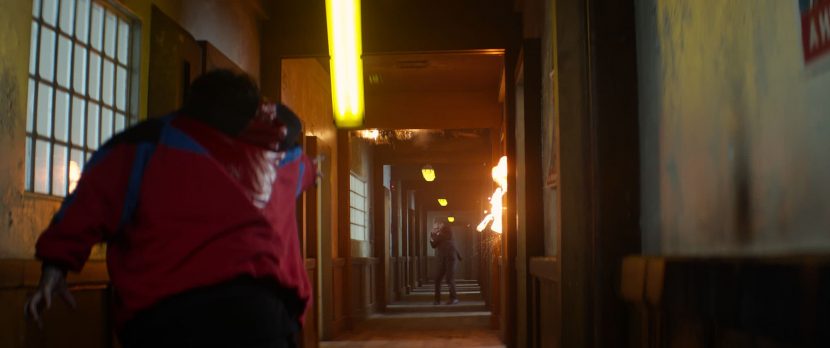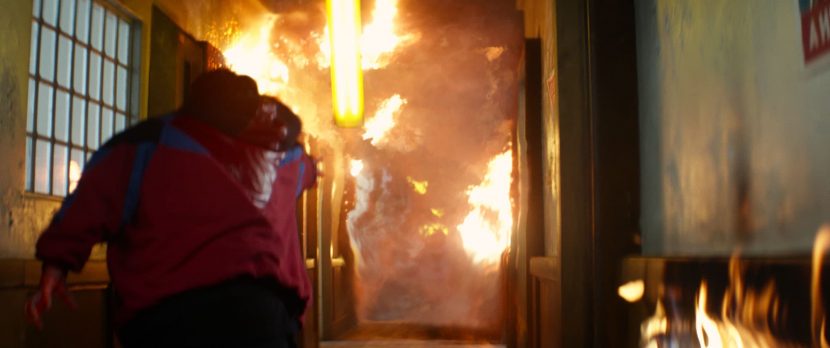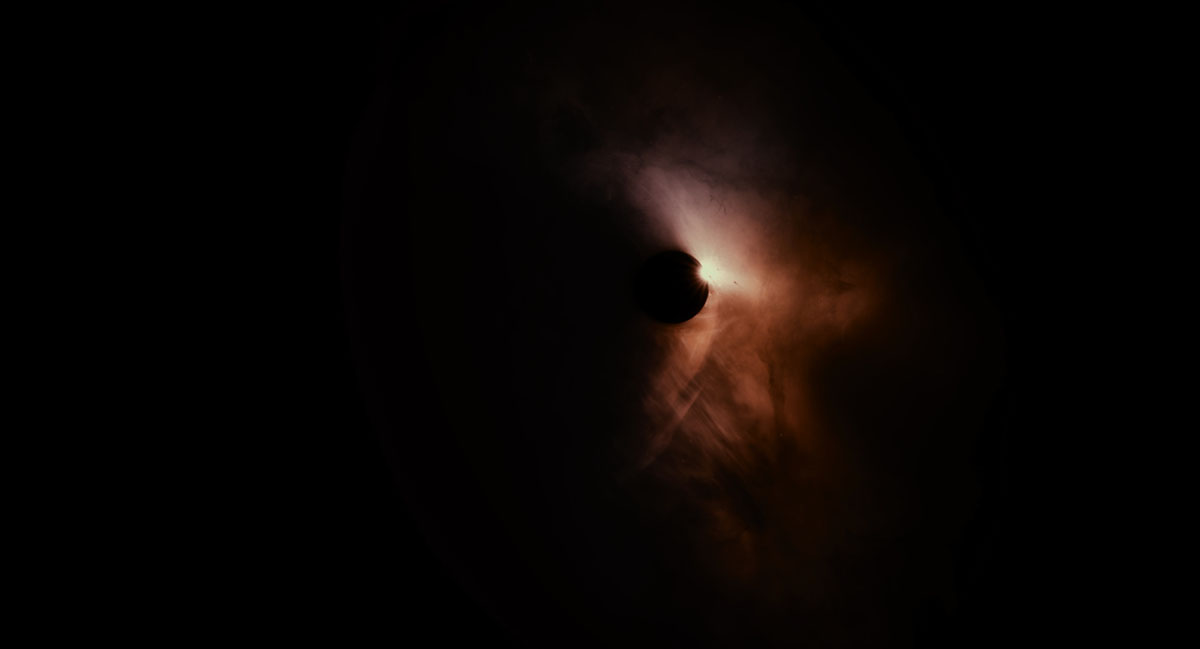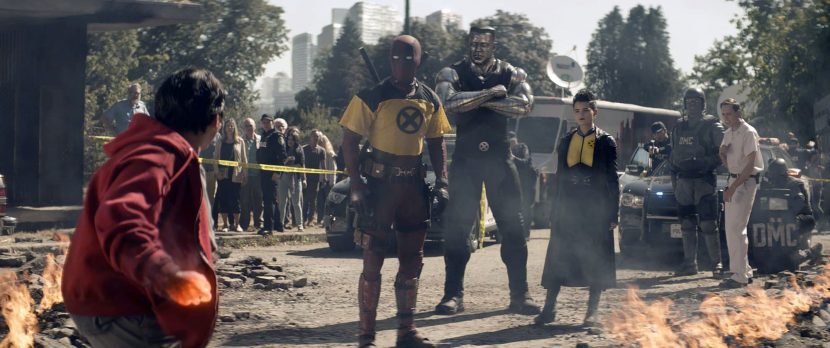Dan Glass has just joined leading visual effects company DNEG and when we spoke to him, a few weeks ago, he had just wrapped on Deadpool 2. When we spoke, the film effects had finished but Glass and the team were still working on some extra bits and pieces for the home digital release.
Glass is well known as a long-time collaborator with prominent directors, such as the Wachowskis and Terrence Malick. Prior to being production VFX Supervisor on Deadpool 2 Dan Glass had supervised films such as Jupiter Ascending, Cloud Atlas, Tree of Life, Batman Begins, and The Matrix sequels.
We talked to Dan Glass about the vfx of Deadpool2, his new appointment at DNEG and his views on the industry moving forward.
Deadpool 2
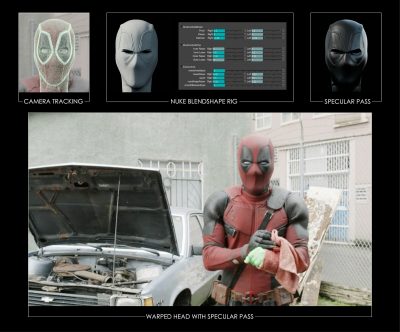
For Deadpool 2 Glass explained he “basically took a leave of absence ” from Method Studios where he had happily been CCO for several years. Method Studios were on the Deadpool 2 roster along with DNEG, Framestore and several other companies. Most of the work was broken down by character, for example Weta Digital did the animation of Deadpool’s face and mask, just as they had on the first film. Weta Digital were the only returning company from the first Deadpool. While Ryan Reynolds did most of the acting in the Deadpool costume, just as he did on the first film, the mask needed CG help. The mask was animated both to help the audience read Reynolds’ performance and because of the occasional dialogue change. For more information on this see our previous story at fxguide on the original Deadpool.
DNEG took the majority of the shots, including Cable’s cyborg enhancements, his look development and his hologram technology. In terms of sequences they did the whole convoy sequence and the parachute assault, the time travel, the future attack on Cable’s family and the present day Fire Fist, sharing shots around the end battle. Framestore did Colossus and Juggernaut. Method worked with Framestore on the large sequences with additional Colossus shots and helped DNEG with some additional Cable shots. Method did the additional Cable shots in the prison breakout scene and the opening of the ‘Nine to Five” sequence.
Tiny Legs
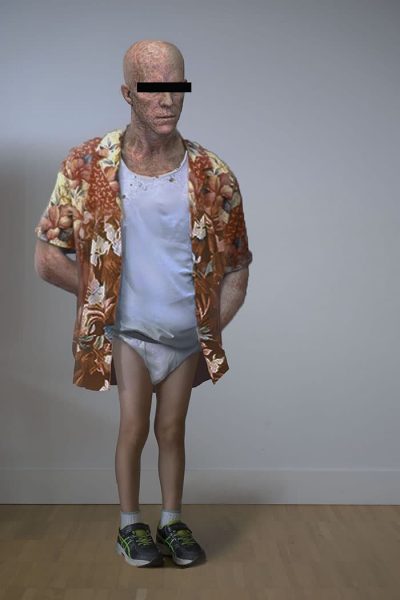
In one of the most upsetting scenes in the film, Deadpool needs to regrow his legs. Part way through this process the production had their “Basic Instinct” sequence on the sofa (!!!)
Glass recalls that the team spent some time trying to work out how to approach the shots. “We knew we’d have to do CG legs and it was like, okay, how do we get the best performance from Ryan?” They debated having the actor on a sofa with a hole built in. “We actually talked to Ryan about it and tried it, and felt that approach had too much impact on his body language. We ended up just having him sit normally, Ryan even did a kind of a miming of the way he wanted the legs to work, for the Basic Instinct pose”.
The team tried to film the actor with his knees and legs as low as possible, given these would need to be removed in post, all without adversely effecting Reynolds natural performance or the comedy of the sequence.
This gag echoed the first film when Deadpool’s hand was blown off and grew back. For the legs, the team used concept art to explore the humour and the gross out factor. “We looked at the way that they did the hand in the first movie, which was more kind of alien” he comments. While the legs were ‘gross’, the script dialogue helped, explained Glass. “Dopinder and Weasel’s reaction was that it was gross, but then Domino’s lines are, you know, cute. So there was a sense that it couldn’t be too gross.”
For the walk the team tried having Reynolds walk on his knees. The DNEG team did a test early on in the studio. The team launched straight into an early test with someone just cutting off the legs digitally at the knees. ” We tested having someone walking on their knees and replacing with short legs and seeing how that looked. And it was incredibly hilarious, even in just the MoCap skeleton form” he comments. These early tests as funny as they were, informed the team that Reynolds purely walking on his knees would not be enough. “To work, you imagine that you don’t have all the whole lower part of your leg behind you to balance. And you also have to imagine that your legs are a lot weaker than they are”. The team encouraged Reynolds to keep very upright rather than leaning to fall backwards or forwards, as one would would need to do to balance. “And then just pull your weight forward with each hip, so it’s much more of a kind of hoisting action” explained Glass.
For the legs themselves, Mike Brazelton, DNEG’s vfx supervisor has a young son. “So we had reference. He used the reference, all the way up to the “Basic Instinct” reveal moment of course, but at least for the legs and skin texture and stuff, we had a good reference for Wade Wilson’s baby legs”.
X-Men behind the Door
In one of the many cameos in the film, at the X-Men Mansion, we see, very briefly, various X-Men such as Beast, Charles Xavier, Cyclops and Quicksilver all hiding from Deadpool. “It did require a bit of planning… we shot the foreground piece, which has Ryan at the X-Men mansion, which is just outside of Vancouver”. The matching plate photography of the X-Men was shot by Simon Kinberg, who is a producer on Deadpool 2 and the director on the new X-Men film (X-Men: Dark Phoenix). “They were shooting in Montreal and we sent them the lens information and lineup data and they matched lighting and angle for us, then we just had to composite the piece as a multi-pass shot” commented Glass.
X-Force
Deadpool organizes a team called X-Force to break Russell Collins / Firefist out of a prison-transfer convoy and defend him from Cable. The team launches its assault on the convoy by parachuting from a plane, but all of the members die during the landing except for Deadpool and the lucky Domino.
Glass was both the visual effects supervisor and also did second unit photography, being credited as a Second Unit Director along with Second Unit Director, Darrin Prescott. This film actually had less time than the first film so the team needed to be extremely focused. “We definitely had quite a bit less time to put the movie together and do the post. There was no ‘unleashing of endless resources’. After the first film’s success, we had to be very smart and you know, there’s a lot of pressure on any project like this that has had such a successful start and perhaps even more pressure because no one really expected the success the first film attained” Glass recalls.
In the jump sequence many of the new team die, including the invisible Vanisher, who’s parachute can be seen in the comp above. At the moment of death the audience finally gets to see what Vanisher looks like, and another cameo this time for actor Brad Pitt.
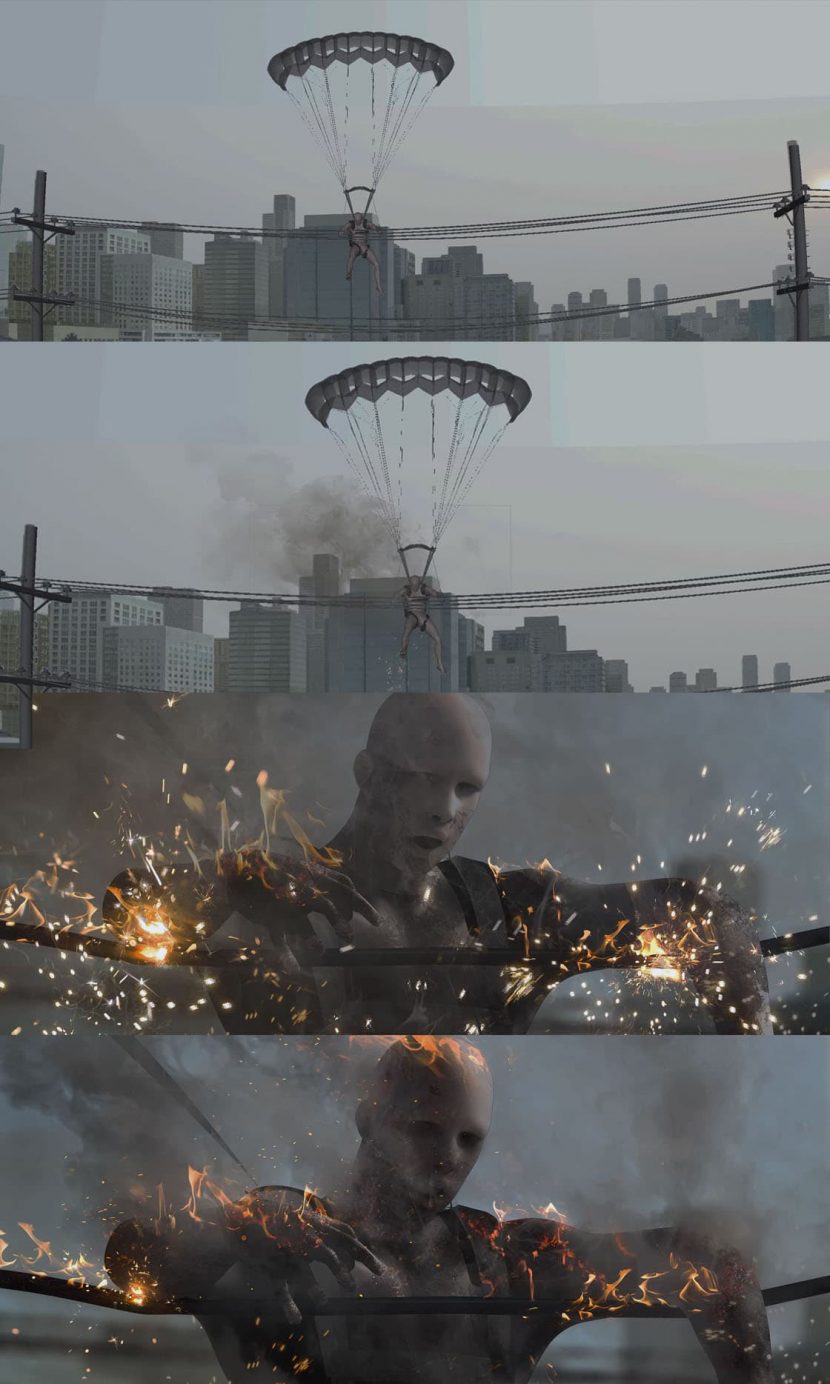
Glass mainly shot plates, aerials for the jump sequence and elements for the convoy chase.
The Chase
Following from the jump is an elaborate chase sequence handled by DNEG. The sequence required Deadpool and Domino to fight Cable during a downtown street chase. For safety and road closure reasons, much of this sequence was shot on blue screen.
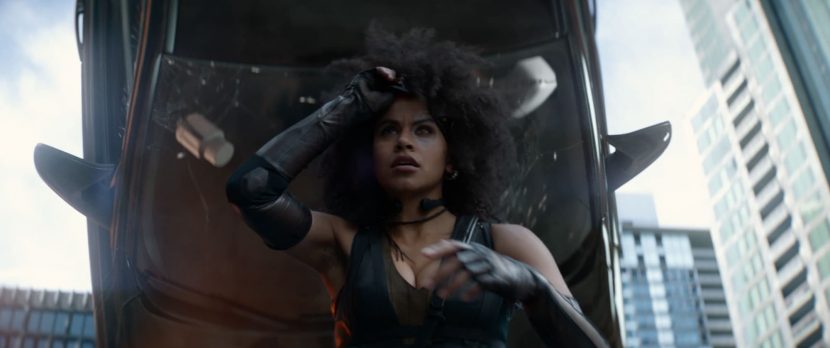
After the chase ends in a dramatic crash, Collins frees fellow inmate Juggernaut, who agrees to help Collins kill the abusive orphanage headmaster.
Director David Leitch’s background is in stunts. Dan Glass has known the director for nearly 20 years since The Matrix Reloaded. “He was a stunt coordinator then and we’ve done a number of movies together so we know each other well”. Leitch’s background really shows in the complexity of material he was able to capture in camera for the Chase, which then required extensive environment work and some wire rig removal.
As the production was shot on a stage it reduced the need for digital doubles in the chase sequence. Digital doubles were created for most of the major characters and used in sequences such as the parachuting. Apart from the wide shots most of the close-ups were done practically. “Cable has a few Digi double shots when the trailer blows up and then as the trailer crashes through the bridge.. Even when Cable’s sliding down the building facade and cutting a kind of trench in it, that is a stunt double on a descender”, points out Glass.
Cable
Cable (Nathan Summers) in the comic books is the biological son of the X-Men member Cyclops (Scott Summers) and Madelyne Pryor (Jean Grey’s clone). He is from a possible future timeline, having been transported as an infant to the future, where he grew into a warrior, before returning to the present. In the comics, as a child, Nathan is infected by the villain Apocalypse with a techno-organic virus, hence his cyborg appearance. While the story lines are not the same, the backstory did inform the design of the character.
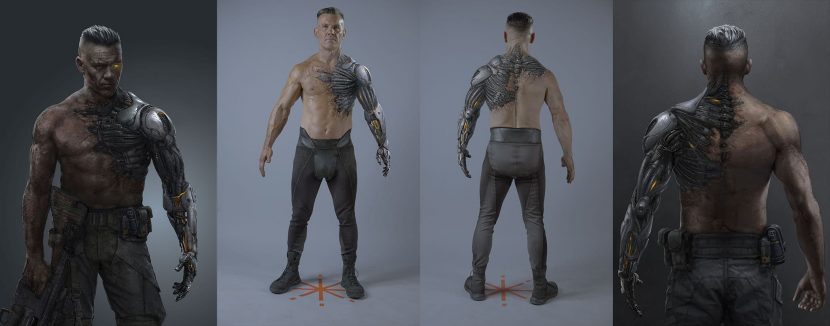
The design of the arm was concept art from David Scheunemann’s Production Design Department. It had come a long way before DNEG started, in terms of studio approvals and design exploration. “We basically took it into 3D” comments Glass. “Anytime a concept is done as a 2D concept, you have to adapt it a little bit to 3D and figure out how it moves and works. And so there were some smaller additional design evolutions as we took it into 3D”.
Cable’s cyborg arm
Ever since Deadpool’s own video mocked the CG arm, we have known Cable’s arm would be digitally replaced. “It’s a metal arm, it’s not like we’re trying to remove a mustache!” yells Deadpool in a pointed Justice League / Henry Cavill, joke.
Glass decided to not have a special effects arm fitted to the actor for the shoot, “I felt like all too often things like a robot arm end up getting replaced and so it did not seem really worth our time to build a sleeve that was over his arm”. Such decisions can limit design options, and anything that added to the size of his arm, and thus the work to remove it, would be counter productive. “So we decided just to go for it and have a motion capture sleeve.”
Glass felt confident that with current render technology the digital arm could be added seamlessly. “it seems like the lighting match these days is so good, what even if we’d had a really great prosthetic on his arm, there would have been probably some good reason to remove it anyway. It just means that there’s less background plate that isn’t hidden this way, so we didn’t have to replace as much.” explained Glass.
Neck
At the neck, the approach was different. Director David Leitch wanted the virus that infects Cable to be creeping up his neck towards his eye, a signature part of the character. Unlike the main arm, Glass worked with Makeup Supervisor Bill Corso to create a prosthetic neck. “I’m actually really happy that it holds up for most of what we needed it to do” commented Glass. DNEG did some minor work with some highlights and a small cleanup on the neck prosthetic.
The other benefit of only using a prosthetic on the neck is that it allowed actor Josh Brolin to be in makeup for much less time. “It can take a tremendous amount of time to apply prosthetics. Some of these can take up to four and a half hours to apply. Josh does have some scars on his face and neck. But ultimately we found ways to try to reduce the time for the production because that can have a huge impact on scheduling and on shoot planning” explains Glass.
Time Travel ‘watch’
Key to Cable’s story is his ability to travel through time with the aid of a time travel watch, which was also added as a practical element to help the actors.
The design of the time piece and its moving parts went through several iterations.
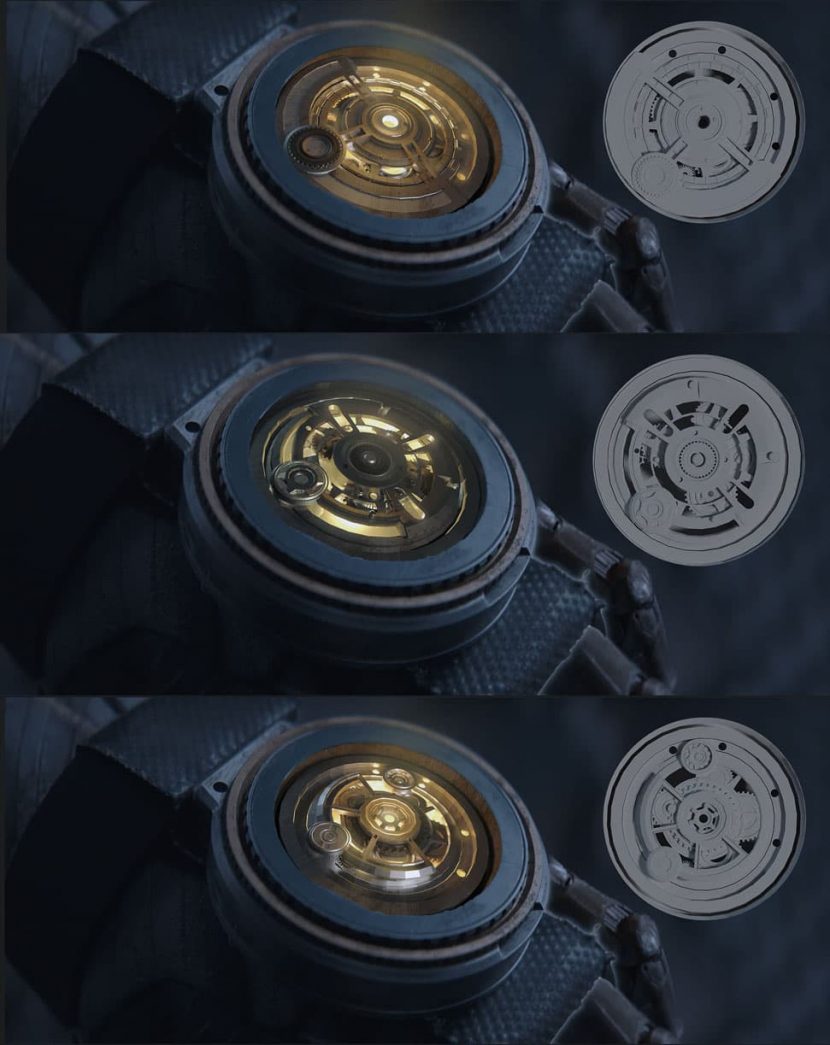
Time Travel and Cable’s tech
DNEG also produced a series of special looks and treatments for Cable’s technology, weapons and time travel.
Russell Collins / Firefist
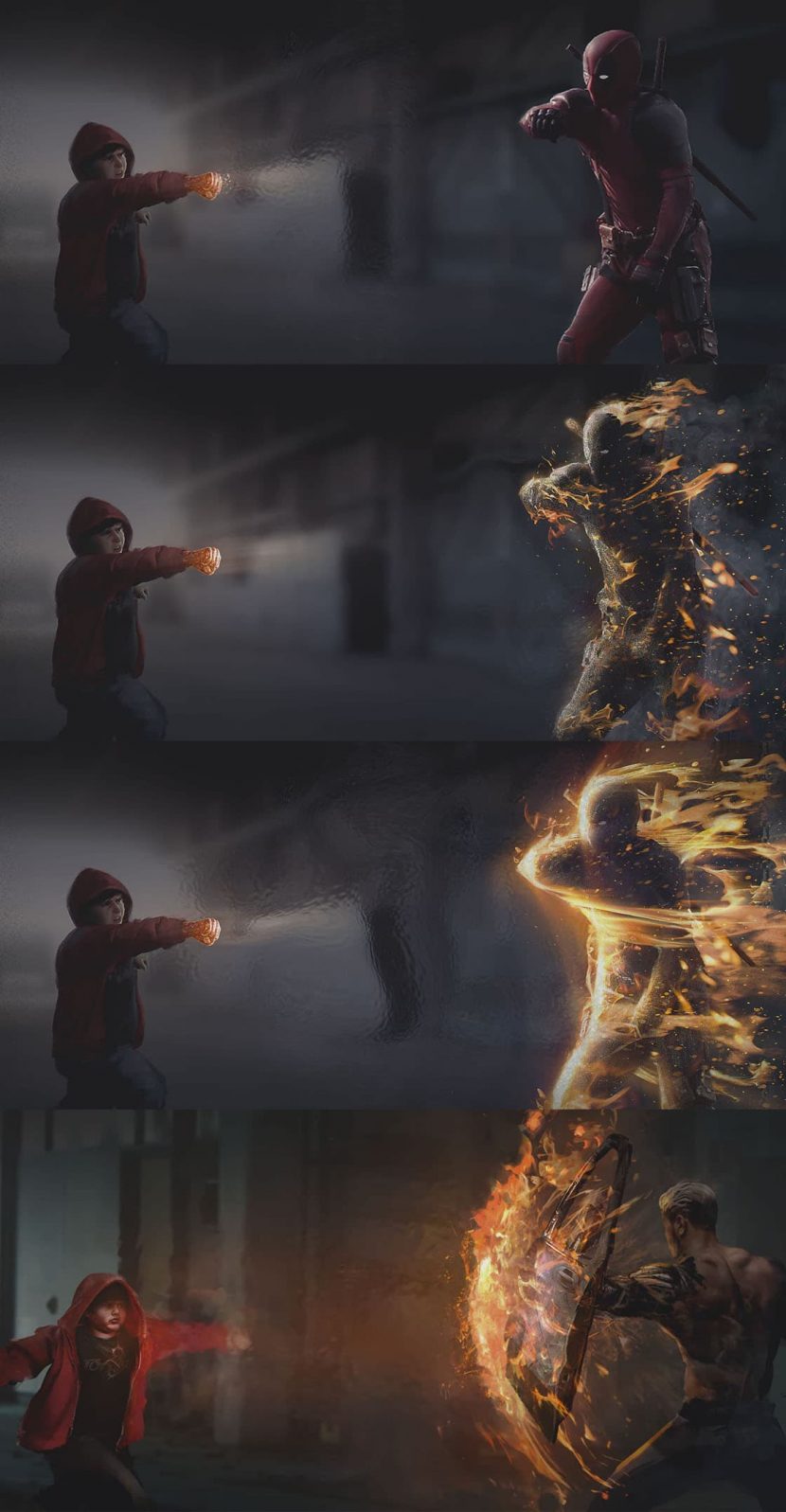
Russell “Rusty” Collins, also known as Firefist, is both the child Deadpool is trying to protect and the villain of the film, (primarily in the future). Firefist is a mutant with the psionic ability of pyrokinesis. He can control and manipulate fire as well as turn some or all of his body into flames, specifically his hands. He is immune to the effects fire has on his body.
DNEG worked on the fist-fire look and translating the inner white hot glow developed in the concept art into the final effect on screen. Russell Collins / Firefist in Deadpool 2, is portrayed by New Zealander Julian Dennison. He was previously best known for his role as Ricky Baker in Hunt for the Wilderpeople (2016), the highest-grossing New Zealand film in history, which was directed by Thor Ragnarok’s Taika Waititi. Ryan Reynolds is friends with Waititi and that is how Dennison was cast in the film.
DNEG Appointment.
Glass left his role of CCO at Method Studios to join DNEG. We took time out from discussing Deadpool 2 to discuss Dan’s broader views on the industry and what he is looking forward to.
Glass has received numerous accolades over his 25 year career, including a BAFTA nomination and two Visual Effects Society awards. In addition to his impressive list of film credits, Glass also served as VFX Supervisor on two seasons of Netflix’s sci-fi cult hit Sense8, including directing two episodes himself.
FXG: Dan, you directed two episodes of the TV show Sense8 (created by the Wachowskis). Now you are at DNEG do you plan to continue exploring directing or second unit directing?
DG: It was tremendous fun. Actually the next project I’m going to continue with David Leitch is a ‘Fast and Furious‘ spin off project, which he is working on. He and his team…well, it’s tremendous fun to work with people that you trust and get along with. As far as directing and writing. As opportunities come up I’m certainly very happy to take them, especially the episodic work. The energy in shooting Sense8, it was like nothing else. It is like no other experience. On a movie, you’re typically shoot one or two pages a day and on episodic work, especially Sense8 we were doing 10, 12, 14 pages a day. We were on location in countries all over the world, we were moving locations sometimes two or three times a day. It was like no other ‘energy’ you can imagine, its tremendous fun.
FXG: You were Chief Creative Officer for several years at Method Studios?
DG: I’ve actually been part of Method Studios for the last seven or eight years. I really enjoy being part of a team. When I started we were 50 or so people, today the company is part of something much larger, it has thousands of artists and are looking to do some 25 to 30 films a year. I really enjoyed my time there. I enjoy thinking strategically, thinking beyond the project I am on. And I really enjoy nurturing talent as well.
I spent a long time at Method both as a supervisor and in an executive role as CCO. But now for various reasons that partnership wasn’t sort of working the way I wanted anymore. Anyway, DNEG they were looking for somebody in a capacity or role, similar to what I wanted and so it is a really great opportunity. DNEG are expanding, actually they have been expanding for the last few years. They are looking to take on larger projects and they liked the idea of bringing in another experienced senior supervisor. I’ve known the gang there from before DNEG existed. I have worked with them on some larger projects and I’ve placed work with them on films such as Tree of Life. I have always had great respect for their crew.
See our fxguide story on Tree of Life with Dan Glass and DNEG here
FXG: Where do you think the tools of our trade are going? Do you think deep learning and adaptive AI will be significant advances?
DG: I think they both have a part to play. The deep learning applications, it’s going to take a little time to figure out the right applications and how best to take advantage of them. Obviously in terms of workflow it is probably the more logical initially. The larger companies like Google and Facebook are kind of adapting and understanding how to deal with data and repeated use of data flows. I think our industry has a lot to learn from that.
FXG: What about real time and virtual production?
DG: As far as real time; I think there are a lot of benefits, that we don’t necessarily need to move to producing feature effects in real time, but when you can operate at that speed it pushes innovation in terms of lighting, rendering and animation technologies. It also helps tremendously the creative process by speeding up the iterative process. You can have that many more goes at creatively tuning a shot.
You also are able to bring the tools to people who are less technical, which is also something that has always fascinated me. Obviously we’re about fusing art and science or science, art and technology and the more you can bridge that gap seamlessly, the better.
FXG: In Deadpool 2 you, and especially the team at Framestore, were doing facial animation (Colossus). This is one area that might see a meeting of those two things, AI and real time? Do you think we will see big advances in this area or will we just continue chipping away at the problem of realistic digital actors?
DG: I think there is going to be some big advances in the next few years. Especially in the way that we’re adapting performances and trying to interpret performances. To understand what it is we see in a a given actor’s performance and also how to retrieve, analyze it and bring actor’s back to life.
So I think that all of the advances is what keeps our job in visual effects so exciting, because it’s never stagnant and each job has it’s own challenges. The tools, the techniques are always adapting and advancing – you have to keep up the race!
FXG: Moving away from the technology, the thing that DNEG seems to have and you certainly have, is a really strong personal relationship with Directors. Its all about those relationships isn’t it?
DG: Oh, absolutely it is. And that’s why the technology, as much as it’s important to talk about, it’s needs to be secondary. Ultimately our industry is driven by the director’s storytelling. We are, in visual effects, a very important support to that process.
For example Terrence Malick, his films have something very unique and exceptional about them. And so I try to figure out ways to bring technical tools to his process. The more that you get these incredibly advanced techniques and tools we need to make sure that they do not become these obscure things that require a filmmaker to have a computer science degree to use. They need to integrate into the design and storytelling process.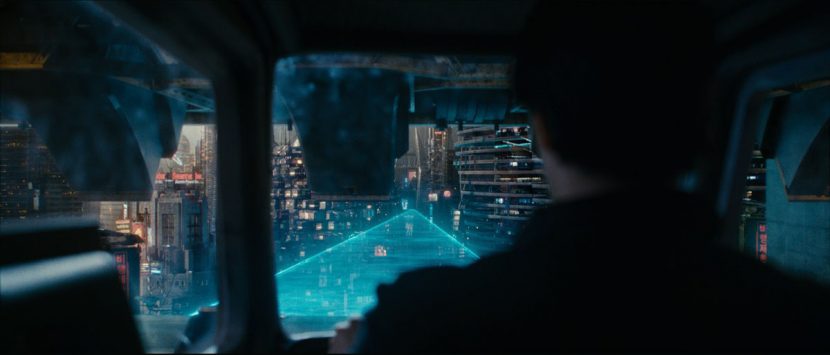
FXG: With all the great the films you’ve done could you pick out two or three moments or films that you recall with fond memories? Even if, at the time, it wasn’t so easy?
DG: Well there was Tree of Life. It was just so unique in the way that it was conceived and the time that it took to put it together. It was over seven years…That was just really an unforgettable experience. Another film that was tremendous enjoyment to work on was Cloud Atlas, because it just felt so different from anything that had come before it and it was incredibly ambitious to adapt a novel like that.
We just didn’t really know if it was going to succeed or not. The idea of trying to create six different story lines and different time periods, different characters, and melding all that together in a way that makes sense.
Actually, that reminds me, of one other particular project, on a very different scale, which was a commercial we did back in London in the ’90s called The Guinness Surfer and it was later voted the Best Ad ever!
That project I remember was the first real time I felt I was in a position of serious responsibility, that could go one way or another. Also working on a project where you had no idea whether it was going to completely tank and nobody was going to understand it or what you were trying to do or if it would be a tremendous success. It was like on this knife edge and maybe I’m like an adrenaline junkie. That is what is ultimately satisfying, working on things that you love and are passionate about.
Speaking of Dan Glass’ appointment, DNEG Managing Director Alex Hope said: ‘I’m delighted to welcome Dan to DNEG at this exciting time in our evolution. We’ve worked for Dan on many of his projects over the years and we are thrilled to have him join DNEG to help the creative and technological development of the company, as well as the expansion of our presence in Los Angeles.’
In his new role Glass will continue to provide his services as a Senior VFX Supervisor as well as working with fellow DNEG senior creative leaders including Peter Chiang, Paul Franklin and Andrew Whitehurst, and DNEG CTO Graham Jack.
DNEG is currently in production on a slate of high profile projects, including Mission: Impossible – Fallout, Ant-Man and the Wasp, Fantastic Beasts: The Crimes of Grindelwald, First Man, Godzilla: King of the Monsters and Venom. The company has previously won four Academy Awards and four BAFTAs for its film VFX work.

